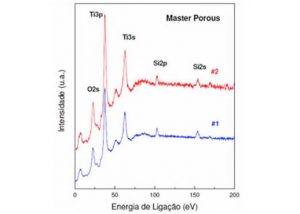Methods: Twelve patients participated in this study. Three months after implant placement, the abutments were connected. Five weeks following the abutment connections, the abutments were removed, probing depth measurements were recorded, and gingival biopsies were performed. The abutments and gingival biopsies taken from the buccal gingiva were analyzed using real-time polymerase chain reaction to compare the DNA copy numbers of Aggregatibacter actinomycetemcomitans, Porphyromonas gingivalis, and total bacteria. The surface free energy of the abutments was calculated using the sessile water drop method before replacement. Data analyses used the Mann Whitney U-test, and P-values below 0.05 find statistical significance.
Results: The present study showed no statistically significant differences between the DNA copy numbers of A. actinomycetemcomitans, P. gingivalis, and total bacteria for both the titanium and zirconia abutments and the biopsies taken from their buccal gingiva. The differences between the free surface energy of the abutments had no influence on the microbiological findings.
Conclusions: Zirconia surfaces have comparable properties to titanium alloy surfaces and may be suitable and safe materials for the long-term success of dental implants.
Keywords: Bacterial adhesion, Dental abutments.
Introduction
Numerous studies on various clinical indications have documented high success rates of dental implant therapy [1-4]. Several parameters have been described to determine the success or failure of long-term evaluations of dental implants.
Among these, periimplantitis has been proposed to be one of the most critical factors of implant failures [5]. Various experimental [6,7] and clinical studies [8,9] have shown a positive correlation between plaque accumulation and periimplant
Bone loss. The surface properties of transgingival implant components have a great impact on the long term success of dental implants. Parameters such as surface free energy and, especially, surface roughness were found to be unsupportive in the prevention of plaque accumulation. Therefore, an ideal transmucosal implant surface should be smooth in order to allow the formation of an epithelial seal that prevents plaque accumulation [10-13]. Conventional titanium abutments are widely used as the transgingival components of dental implants [14]. In addition to commercially pure titanium, studies have reported promising results with titanium alloys or with surface modifications of titanium such as coating with titanium nitride (TiN) or zirconium nitride (ZrN) [10,15]. In recent years, in order to achieve a final implant-supported prosthesis indistinguishable from the adjacent natural teeth, zirconium abutments have been favored for their aesthetic benefits, especially in the anterior area [16,17]. Zirconia has an excellent resistance to corrosion, biocompatibility, and high levels of loading capacity [18]. The role of specific bacterial species in the pathogenesis of human periodontal diseases has been extensively reviewed, and among these Aggregatibacter actinomycetemcomitans and Porphyromonas gingivalis have been identified as the species most strongly associated with periodontitis and periimplantitis [19,20]. These two pathogens have been shown to be able to invade human buccal epithelial cells in vivo [21].
The aim of this study was to compare the tendency of two periodontal pathogens to adhere to and colonize esthetically favorable zirconia abutments and titanium alloys, both on hard surfaces and in soft tissues for 5 weeks after abutment placements.
Texto completo: PDF



